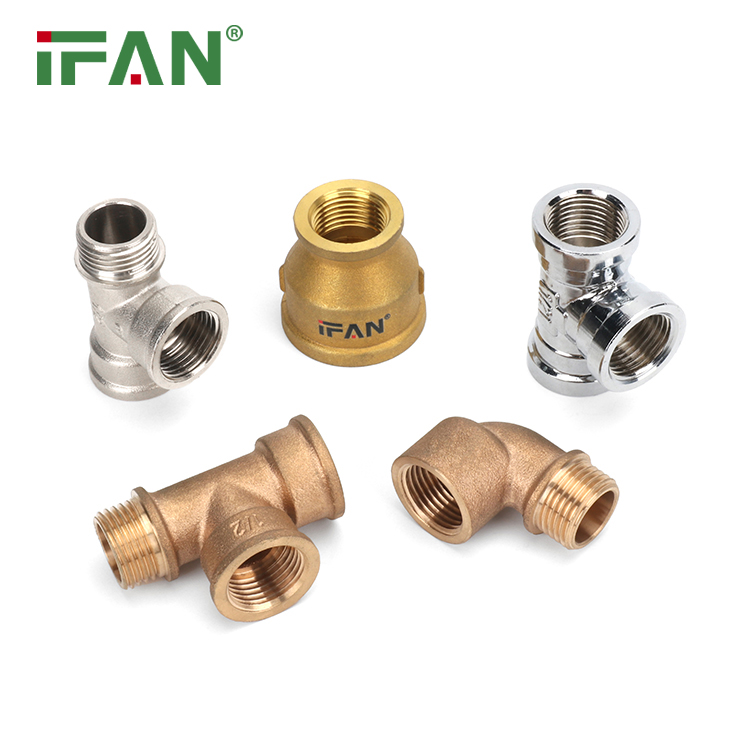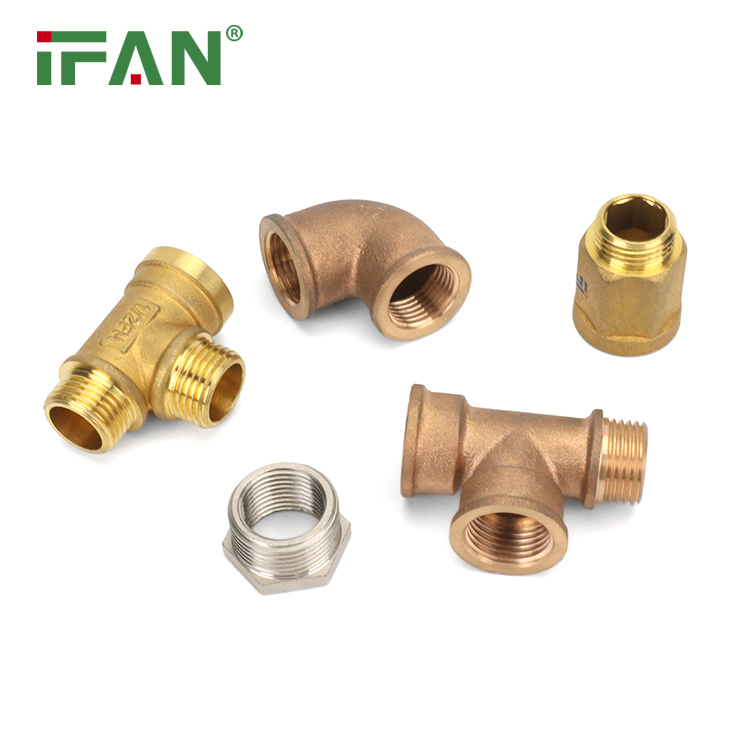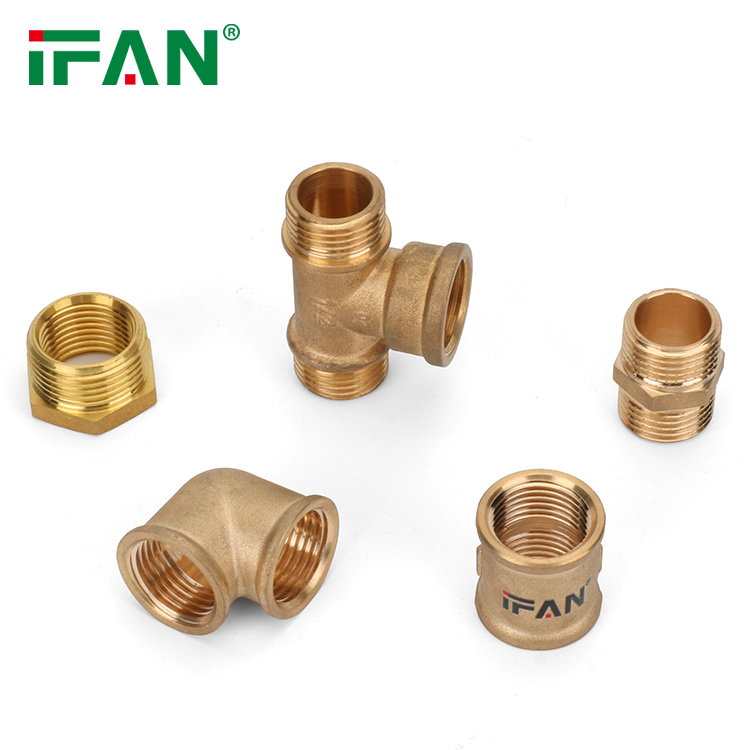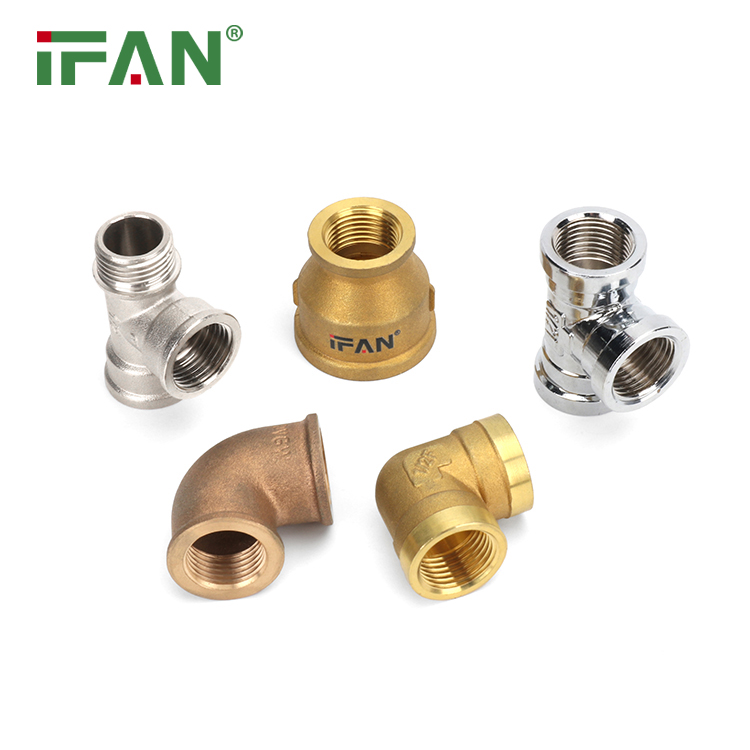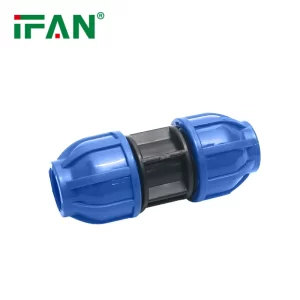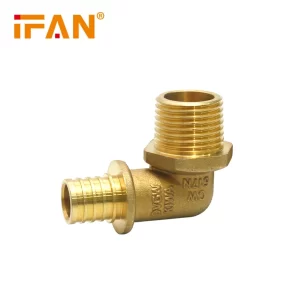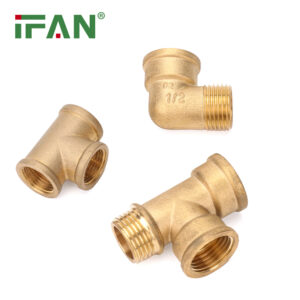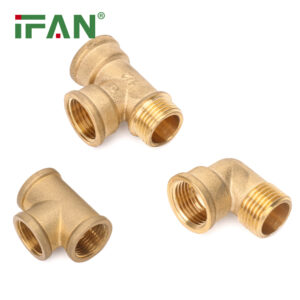Description
IFAN factory 30+ years manufacture experience support color /size customization support free sample.Welcome to consult for catalog and free samples.This is our Facebook Website:www.facebook.com,Click to watch IFAN’s product video.Compared with Tomex products, our IFAN products from quality to price are your best choice, welcome to buy!
Brass fittings are an essential component in plumbing, HVAC, automotive, and industrial applications. Known for their durability, corrosion resistance, and excellent mechanical properties, brass fittings play a critical role in ensuring the integrity of piping systems. However, even the highest-quality brass fittings can experience leaks and failures due to a variety of factors. Understanding the causes and solutions for these issues can help you prevent costly repairs and ensure the long-term performance of your systems.
This article will explore common causes of leaks and failures in brass fittings, provide troubleshooting tips, and offer preventive measures to maintain the efficiency and reliability of your piping systems.
Common Causes of Brass Fitting Failures
Before diving into troubleshooting, it’s essential to understand the common causes behind brass fitting failures. These include:
1. Improper Installation
One of the most frequent causes of leaks in brass fittings is improper installation. If fittings are not installed correctly, they can fail prematurely. Some common installation mistakes include:
– Over-tightening or under-tightening: Over-tightening can cause the brass fitting to crack, while under-tightening may leave a gap that results in leaks.
– Misalignment: If the fitting is not aligned properly with the pipe, it can cause stress and lead to leaks or failure.
– Inadequate sealing: Failing to use the correct sealing materials, such as PTFE (Teflon) tape or pipe joint compound, can prevent a proper seal and result in leaks.
2. Corrosion and Wear
Even though brass is corrosion-resistant, prolonged exposure to certain environments can cause wear and corrosion. Brass fittings exposed to highly acidic or alkaline water, saltwater, or other corrosive chemicals are at risk of degradation. This can lead to cracks, holes, or other forms of damage that allow fluid to escape.
3. Excessive Pressure
Brass fittings are designed to withstand certain pressure levels. If a system is subjected to pressure that exceeds the maximum rating of the brass fitting, it can lead to cracks, leaks, or even catastrophic failure. Over-pressurization is common in systems that are poorly regulated or improperly maintained.
4. Temperature Extremes
Brass fittings perform best within a specific temperature range. Exposure to extreme temperatures, both high and low, can cause brass to expand or contract. This can weaken the fitting and cause it to fail, particularly if there are significant temperature fluctuations over time.
5. Poor Quality Fittings
Not all brass fittings are made with the same standards of quality. Low-quality fittings may not have the durability or resistance to wear that high-quality brass fittings offer. Investing in reliable, reputable manufacturers can reduce the likelihood of failures due to poor-quality materials.
Troubleshooting Brass Fitting Leaks and Failures
If you notice a leak or failure in your brass fitting, there are several steps you can take to troubleshoot the issue and prevent further damage.
1. Check for Tightness
First, check that the fitting is tightened properly. Loose fittings are often the primary cause of leaks. Use the appropriate tool to gently tighten the fitting, being careful not to overtighten. Over-tightening can cause the brass to crack or deform, which will lead to even more significant leaks or failures.
2. Inspect for Corrosion
If the fitting is old or has been exposed to corrosive environments, inspect it for signs of corrosion. Corrosion may appear as discoloration, pitting, or a buildup of residue on the surface of the fitting. If corrosion is present, the fitting will likely need to be replaced, as the corrosion will have weakened the brass and made it susceptible to leaks.
3. Examine Seals and Threads
A common reason for leaks around brass fittings is improper sealing. Inspect the threads of the fitting and the pipe. Look for worn or damaged threads that could cause an imperfect seal. If the threads are in good condition but there is still a leak, check the sealing material. Ensure that any PTFE tape, pipe joint compound, or O-rings are intact and properly applied.
4. Verify Pressure Levels
If your system is experiencing excessive pressure, this could be the cause of brass fitting failure. Check the pressure settings and make sure they are within the recommended range for your specific fittings. If the pressure is too high, consider installing a pressure regulator or adjusting the system to reduce the pressure. Consistently high pressure can weaken brass fittings over time, leading to failure.
5. Examine Temperature Conditions
Brass fittings are designed to perform optimally within certain temperature ranges. If the system has been exposed to extreme temperatures, whether from hot water or external heat sources, check if the brass fittings show any signs of stress. If temperature fluctuations are frequent or extreme, consider upgrading to fittings made from materials with better temperature tolerance, or insulate your system to reduce the risk of expansion and contraction.
6. Replace Damaged Fittings
If you find any physical damage such as cracks, pits, or holes in the brass fitting, it is essential to replace it immediately. Even minor cracks can grow over time, leading to significant leaks and failures. Always use high-quality replacement fittings from reputable manufacturers.
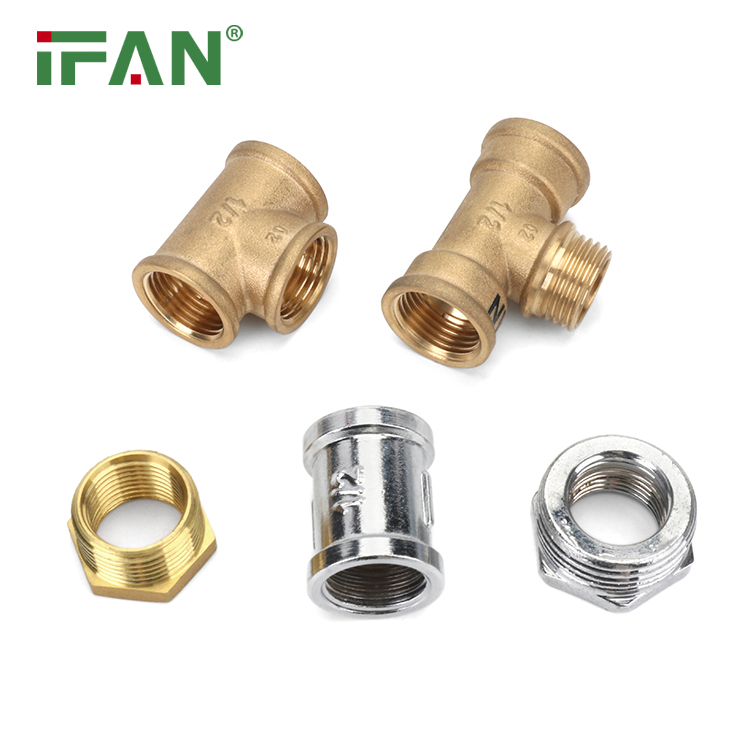
Preventive Tips to Avoid Brass Fitting Failures
Prevention is often the best course of action when it comes to brass fitting maintenance. Here are some tips to help prevent leaks and failures:
1. Use the Correct Fittings for Your Application
Make sure that the brass fittings you are using are suited for the specific environment and pressure levels of your system. Choosing the correct size, material grade, and type of fitting will reduce the likelihood of future issues.
2. Install Fittings Properly
Ensure that brass fittings are installed according to manufacturer instructions. Pay attention to the recommended torque specifications and use the correct sealing materials. Proper alignment and tightening can prevent many common issues, such as leaks and misfits.
3. Regularly Inspect Your System
Conduct regular inspections of your plumbing, HVAC, or industrial systems to check for signs of wear, corrosion, and leaks. Early detection of potential issues allows for timely repairs before they lead to more severe damage.
4. Maintain Appropriate Pressure and Temperature
Avoid exposing brass fittings to excessive pressure or temperature extremes. Make sure your system is well-regulated, and invest in pressure relief valves and temperature controls to protect your fittings from stress.
5. Use High-Quality Materials
Invest in high-quality brass fittings from trusted manufacturers. Cheap or low-quality fittings are more prone to wear and failure. Choose fittings that are made from corrosion-resistant alloys and designed for high durability.
Conclusion
Brass fittings are an essential component of many systems, but they can experience leaks and failures due to improper installation, corrosion, excessive pressure, or extreme temperatures. By understanding the common causes of brass fitting failures and taking proactive steps to troubleshoot and maintain your system, you can prevent costly issues and ensure the longevity of your brass fittings. Regular inspections, proper installation, and high-quality fittings are crucial for achieving reliable, long-lasting performance.
Frequently Asked Questions (FAQ)
1. How do I know if my brass fitting is leaking?
You can identify a leak by inspecting the fitting for visible water or fluid around the connection. If the fitting feels damp or there is water dripping, it indicates a potential leak.
2. Can brass fittings withstand high-pressure systems?
Brass fittings are designed to withstand moderate to high pressures, but exceeding the manufacturer’s pressure rating can cause damage. Always ensure that the pressure is within the recommended range.
3. How do I prevent corrosion on brass fittings
To prevent corrosion, avoid exposing brass fittings to harsh chemicals, saltwater, or acidic substances. If your system operates in corrosive environments, consider using specialized corrosion-resistant alloys.
4. Should I use PTFE tape on all brass fittings?
PTFE tape is commonly used to ensure a tight seal on threaded brass fittings. However, some fittings may require a different type of sealant, such as pipe joint compound or an O-ring. Always check the manufacturer’s instructions.
5. Can I repair a damaged brass fitting?
Minor damage, such as slight wear or small cracks, cannot usually be repaired. It’s recommended to replace the damaged fitting to prevent further issues.
Related products


